The Match, The Stat: Liverpool 1-0 Arsenal
Arsenal are a very good team. They should try attacking.
Liverpool beat Arsenal 1-0 at Anfield on Sunday to enter the international break as the only Premier League side with nine points on the board. Imagine what they will do when they start playing well. What the victory over the Gunners lacked in flair, it more than made up for in resilience.
After slow starts to 2025/26, Ibrahima Konaté and Milos Kerkez were superb. The former was the game’s top player for On-Ball Value, thanks largely to posting the second best figure for the defensive aspect of the metric in the top flight this weekend. Virgil delivered a classic dose of van Dijk while Dominik Szoboszlai has now won more player of the match awards in the last week than he did last season.
To bank three wins having yet to play to their full potential is a fantastic platform for the title race ahead. Arne Slot acknowledged as much when speaking after the game. “We have nine points out of games where last season we picked up five points. So, that’s only positive but I do know and understand that we can do better,” he said. Only Bournemouth have gained more points on the corresponding fixtures from 2024/25 than Liverpool.
The defeat will feel like a missed opportunity for Mikel Arteta. If not struggling as such, the Reds are in a period of emotion-drenched upheaval as they integrate their summer signings. August will be the least fluent month for their new look attack.
Liverpool have also exhibited structural flaws in the early weeks of the campaign. Granted, Arsenal excel at set pieces which is how a 10-man Newcastle side almost saved a point against the Reds. But both Crystal Palace and Bournemouth sliced through them when the Gunners showed little inclination to try.
Sky Sports co-commentator Gary Neville was aghast at Arsenal’s approach early in the second half. Riccardo Calafiori took a throw-in roughly six yards from the goal line, and although the Liverpool defence was well set, a very modest press forced Arsenal to go backwards to the point the left-back then lost possession to Florian Wirtz on half way. The available Opta chalkboards don’t include throw-ins, hence the green line added here:
For a team to not make something of this when they had blasted the kick off to the same (first half equivalent) section of the touchline seemed crazy. The only surprise at Neville’s apparent surprise with Arsenal was that he was surprised at all. This is how they play.
Retaining possession in perhaps your hardest league fixture of the season is clearly no bad thing. Not being able to progress forward in the below situation (with #3 in possession as per the pass map) implies a lack of ambition.
The former Manchester United defender’s comments led me to post the following. Harsh or fair?
Cowardly was a bit much, leading Arsenal supporters to take exception to the post. Some pointed out that their side were away to the champions so their tactics were understandable. Should they open up to give Liverpool an easy day?
Others highlighted that the Gunners led the shot count. Again, can’t argue with that beyond the fact it misses the point. If they could do that against the best team in the land when holding plenty back, why not push for more against a side still finding their 2025/26 feet?
Question the Gunners but also credit Liverpool. The Reds’ defenders blocked all six shots Arsenal had in open play. Those efforts totalled 0.29 expected goals, with none individually valued at more than 0.09. Only Sunderland have generated less xG in open play so far this season. Neil Atkinson of The Anfield Wrap nailed it perfectly in his match review, as usual:
If cowardly was harsh, cautious was more than fair. Yet it could be argued that Slot’s tactics were no different. Arsenal fan Scott Willis (on whose podcast I appeared last week) noted his side had “slightly more forward passes as a share of total passes compared to Liverpool,” at 47.7 per cent to 47.1.
However, if you apply the same measurement to completed passes, the balance tips to 41.3-40.3 in the Reds’ favour. Calculating successful forward passes as a proportion of those plus backward passes reads 53.7-50.4 to Liverpool.
These differences aren’t huge but they align more with how the game felt watching it play out, especially once the excellent Curtis Jones entered the fray. As Michael Cox of The Athletic put it, “the first half was about midfielders dropping back between the centre-backs. The second half was about Liverpool's midfielders pushing up and getting between the lines, allowing forward passes and creating chances.”
And if ever you need a match to prove the importance of game state, this is Exhibit A. Arsenal did an enormous proportion of their attacking once they had no choice.
Let’s look at take-ons. Teams with 47 per cent possession against Liverpool usually attempt more dribbles than the Gunners did, sometimes over twice as many. Arsenal’s tally stood at just three when Szoboszlai scored though. Sixty-seven per cent of their take-ons occurred in the final 16 per cent of the contest.
If the results are not as extreme, the same principle applies to our passing statistics. The percentage share of Arsenal’s passes that were forward was 43.1 before Martin Zubimendi’s fateful foul, 62.2 afterwards. Liverpool were 3.1 per cent ahead at 0-0 for this, 6.1 per cent up on forward passes as a proportion of the successful total. The Reds didn’t just have home advantage, they had the greater will to win.
Arsenal are a good team. They played pretty well, ensuring that at least the first hour of the match was fought on their terms. If they want to win the league, the Gunners need to take a few more risks at 0-0, not just once they trail though.
Where the margin fell their way in a tight match at Old Trafford, here it deserted them. It has handed the initiative to the worst possible team; it’s up to Liverpool to take advantage. It’s also up to Arsenal to, you know, attack.


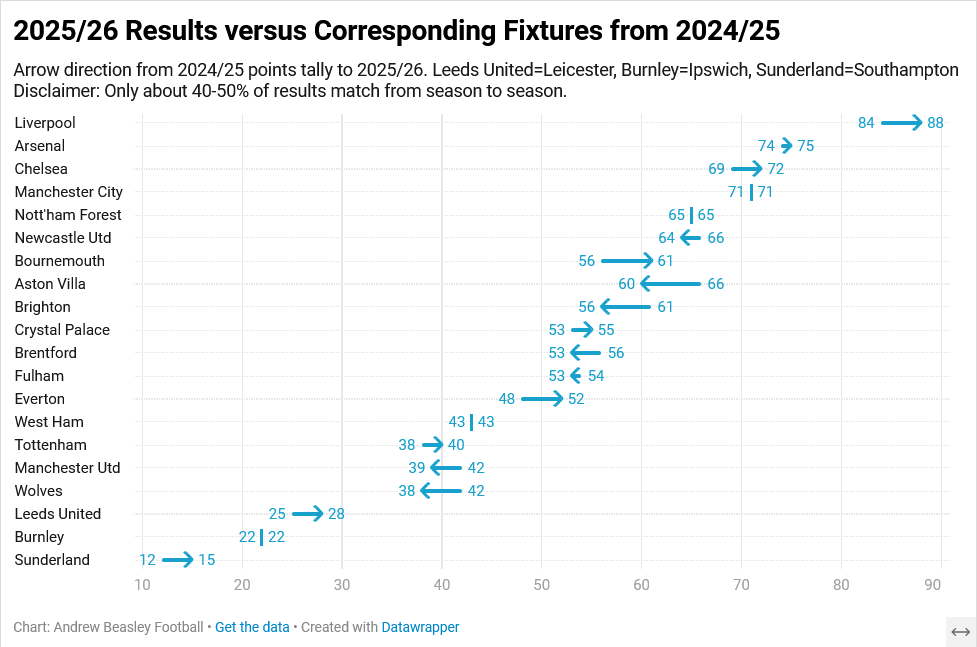
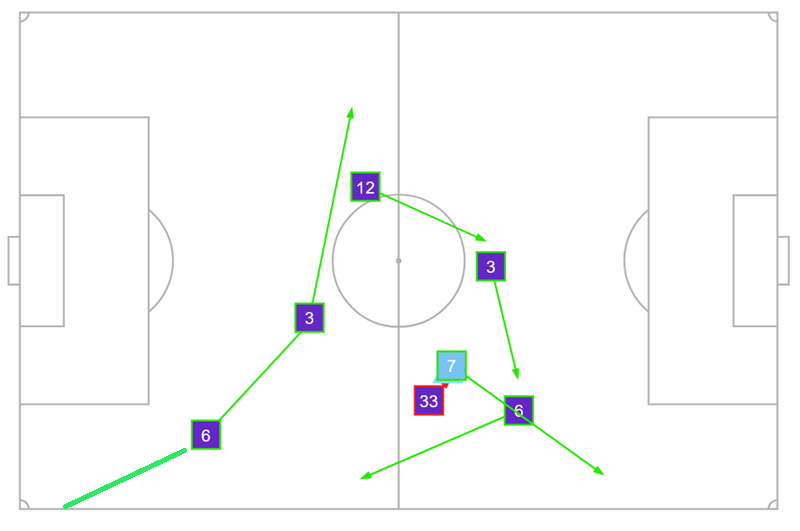
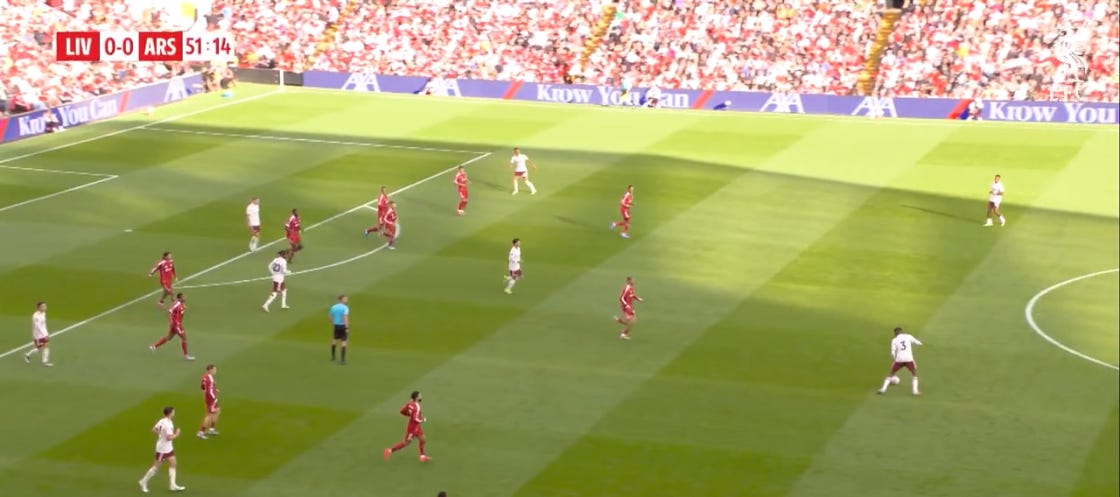


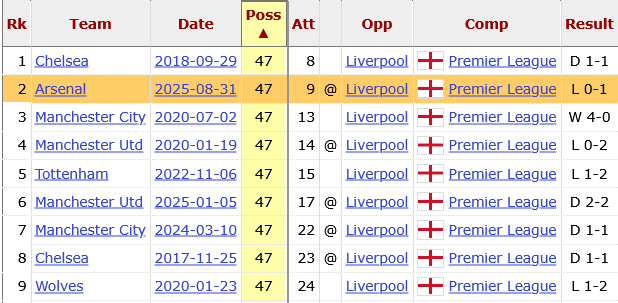
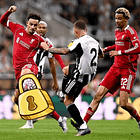
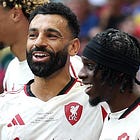
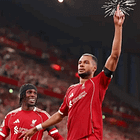
I think Arteta came into the match fully intent on playing for the draw. You can argue about their injury list (Saka, White, Odegaard not starting, etc.) but it was clear from their lineup (3 DMs, 4 CBs) that they really had no intent of moving forward but instead would soak up pressure and look for the counter opportunity in the same way that Bournemouth and Newcastle did. The difference was that both of those clubs didn't just wait on that opportunity, but attempted to dictate play themselves. I'm as confused as you are and, yet, it all seems so typically Arteta.
Arteta's tactical decisions made sense given the context. If Dom doesn't produce a moment of magic, his tactics would have yielded a point away at Anfield & no one would be talking about this.
The context? First, away to the Champions at Anfield should prompt some tactical conservatism. Second, injuries mean you're without a third of last season's goal production, your 2 best chance creators & your best center back. Third, just like us, they are still integrating some vital new pieces (Gyokeres, Madueke, Zubimendi & Eze) critical to a high-functioning attack.
The worst-case scenario feels greater than the best-case scenario if he took more risks in this match given the above 3 factors. If risks get punished and lose by multiple goals, it could damage confidence & have a lasting effect. If risks get rewarded, they have a 2-point advantage going into September. Given the 3 factors above, it seems like this was Arteta embracing the "big picture", realizing that a 1-0 loss isn't that big of a deal. P.S. Neville is such a tool.